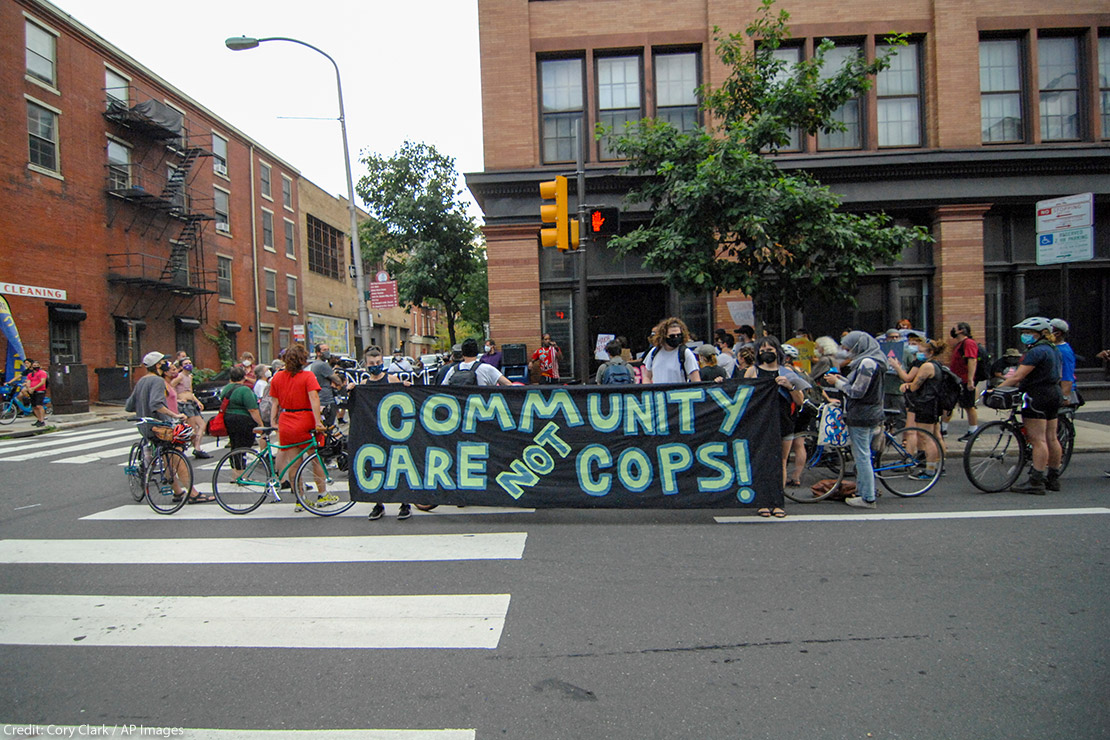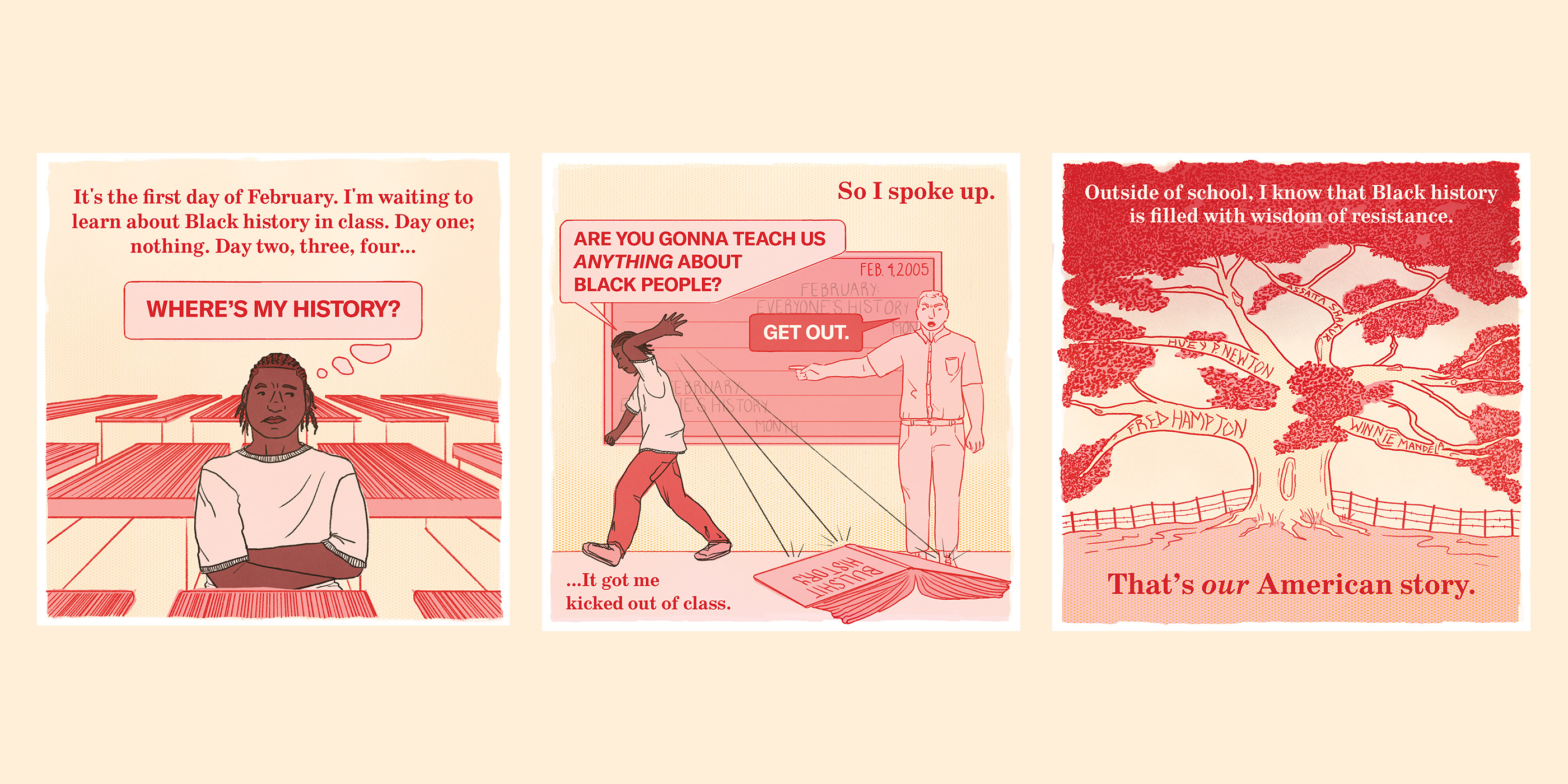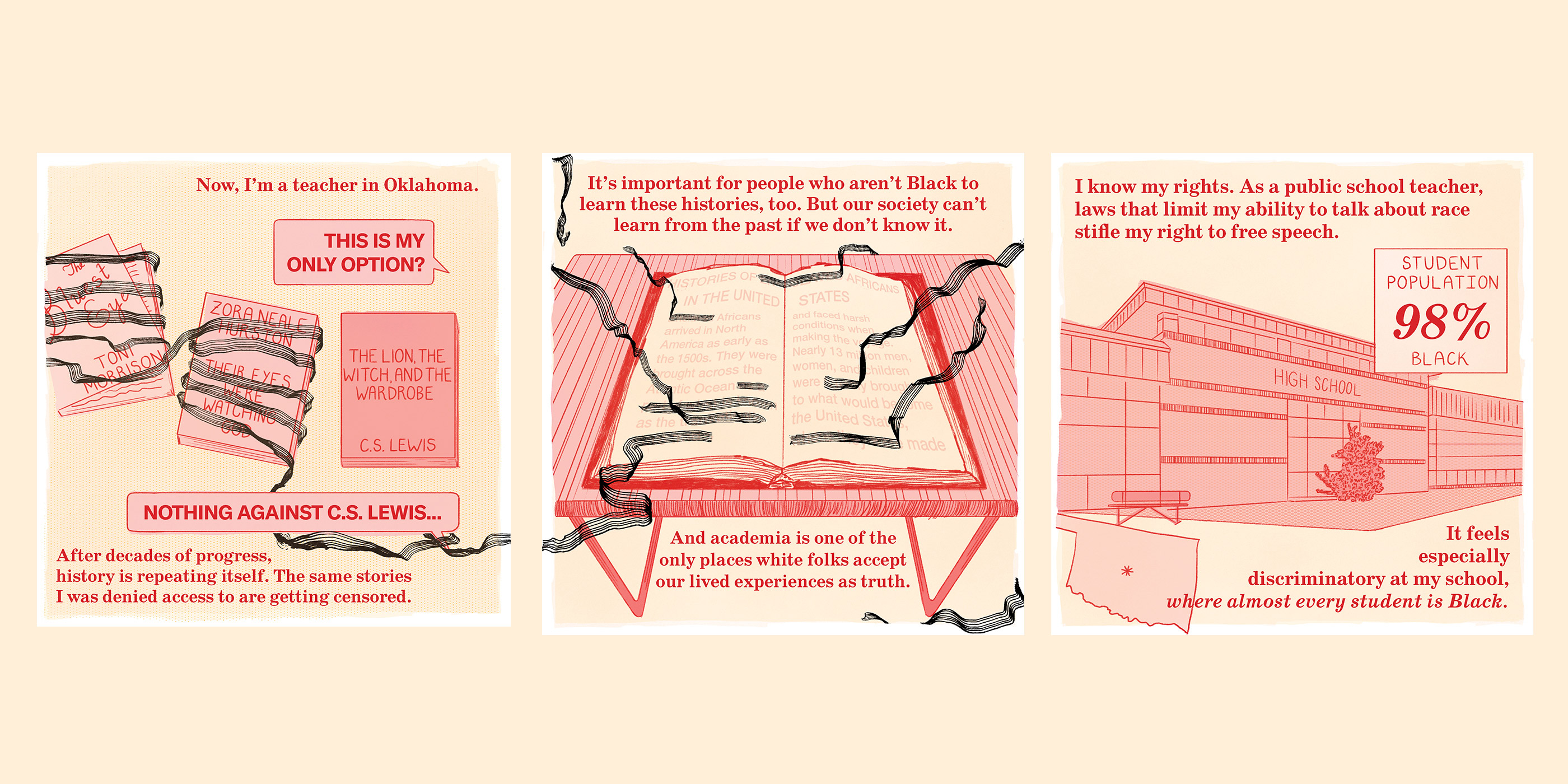
Right now, efforts to censor college protestors, to ban diverse materials in schools and to silence students and staff threaten our right to free speech in schools. People are having their voices silenced, their right to learn challenged, and their access to information restricted. But how can we navigate these complex issues with the next generation?
We at the ACLU created a series of comic stories with illustrative journalist Eda Uzunlar to empower students and educators, spark vital conversations about their rights, and ensure all voices are heard and clear, both in the classroom and beyond. Our first installment illustrates the story of Anthony Crawford who is a public school teacher and part of a lawsuit challenging HB 1775, Oklahoma’s classroom censorship law.
In this Q&A, we sat down with Eda to discuss why comics are the perfect medium to tackle these issues and connect with young people in a way that resonates far more effectively than traditional media can.
Let’s start with your journey as an illustrative journalist, comic creator, and audio enthusiast. What inspired you to use this kind of medium for your work?
I’ve been making comics since childhood. Like most kids, I doodled, and eventually, my doodles turned into my first comic. It was about a character called Spaceman – creative, I know – an astronaut stranded on the moon. He was this sardonic, really sarcastic, figure. It was a simple concept. He became this kind of vessel for expressing myself as a young person, particularly growing up in South Dakota with my family being both Muslim and immigrants from Turkey. Expressing these issues in a way that people who were very different from me would understand was crucial to me.

I realized that comics are a way to discuss complex stories without oversimplifying them. But I never imagined it would become a career. Similarly, my entry into journalism was unexpected. Someone introduced me to FM radio in my teens. Within a year, community radio became this amazing space for me where I hosted a show discussing anything, from civil disobedience to whether or not respect is implied or earned – things I thought people from any background could weigh in on. And I don’t know why they gave a 16-year-old the ability to take live calls, but I got to talk to so many people in my community that way. It felt like a continuation of my comics — anonymous conversations driven by passion rather than preconceived notions based on appearances.
So I took those experiences and turned them into what I do now. I try to help people tell their stories – no matter how complex – in an accessible way, so others can gain understanding of perspectives they might not have known about before.
It’s so great how you’ve integrated your childhood passion for comics with your later pursuits in journalism and radio. You mentioned that comics offer a unique way to discuss complex issues without oversimplifying them. How do you navigate that balance between accessibility and depth when creating your comic content?
It’s all about breaking down big ideas into something digestible and engaging. When stories like these are presented in a visual format, it helps the audience both process and retain what they’re taking in. This especially applies to younger people. They’re the ones making use of social media and watching YouTube to learn about the world around them. Traditional newspapers? Not so much for them. And when we’re talking about accessibility, it’s a big deal. There’s a direct correlation between marginalized groups and limited access to media literacy. Traditional long-form journalism often fails to reach these communities.

Take, for instance, the whole debate around critical race theory (CRT) in Oklahoma. A long-winded article might not reach the people who need to hear about it most. But with comics, we’re able to package up those complex ideas into something that will catch your eye and is easy to grasp. It’s like delivering a message directly to their social media feed. By making these reported stories visually engaging and using everyday language, we’re making sure that everyone gets a chance to join the conversation, especially those who might feel left out by traditional media channels, especially the ones with a paywall.
Let’s talk about this first comic you worked on about Anthony Crawford, an Oklahoma teacher who is part of a lawsuit challenging a classroom censorship bill. How did your approach to brainstorming and initial sketches contribute to capturing his story, particularly in conveying the depth of Black history and the importance of including both student and teacher perspectives?
There’s a process where you try very hard not to limit yourself at the beginning. That’s where you do quick sketches of one panel ten times, trying anything that might be cool to represent the idea. For example, for the panel about Black history being filled with wisdom, not just difficulty, there are a thousand ways to approach it. That could be represented literally with historical figures, or the opposite, which is what I did – a tree. A really big, grand tree. On its own, it could mean anything. But with the context and few words in the panel, it suggests a huge heritage and lineage. Trees are generational, lasting hundreds or even thousands of years. I had about five ideas, and then I saw how the tree looked. The detail and grandeur of this single image helped convey the depth to which Anthony described the importance of Black history in America, aligning with the voice he gave it throughout the piece. That’s another thing – I went back and said, “Listen, there’s just a tree in this panel, but it’s based on how you talked about what Black history feels like to you.” Like history existed before we were here and after we’re gone, just like a tree. And he was like, “That’s perfect.”
With critical race theory and book bans, everyone loses. The teacher, the student, the whole community is affected when our right to learn and right to free speech are stifled. So we really wanted to get both the student and teacher perspectives. Anthony opened his own story as a teenage version of himself in the early 2000s, enraged because he wasn’t being taught his own community’s history, discussing his experience as a student, which served as an ideal starting point for the piece. Eventually, he transitions into the current day, where he’s facing the same problem – only now, he’s the teacher. And there’s this vague law in Oklahoma that makes it hard for him to teach that same history, and the history of other oppressed communities in America. This shift illustrates the cyclical nature of issues like CRT and book bans in Oklahoma, highlighting how such restrictions on free speech persist over time. The initial depiction of Anthony as an unhappy student parallels the final panel where he faces his own students, who are motivated to learn because they can actually see themselves in their histories.
From Anthony’s perspective as a teacher, the issue of critical race theory getting banned is represented as one that educators like him are worried about. How did you make sure that struggle spoke to the younger audience as well?
When students face dilemmas like seeing banned books in their libraries and the removal of celebrated authors of color from their curriculum, it can shake their confidence in their education and understanding of history. That’s the first part of the comic, and allows young people to make connections with the younger version of Anthony. Then, the narrative zeroes in on the educator perspective. Anthony champions diverse perspectives in his classroom. Through his actions, the comic reveals Anthony’s motivations for teaching, emphasizing his dedication to his students and his younger self. That’s where I wanted students to connect to the teacher side of the comic – so they know that if their right to an inclusive education is stifled, even if none of their own teachers have taken steps to continue teaching about America’s diverse history, there are educators out there who care and are making a difference. My hope is that by seeing someone who was once in their shoes assert his First Amendment rights, current students feel empowered to do the same for themselves.
In fact, I have seen my comics be used as a connection between students and teachers. I put out a comic about juvenile justice, and about a year later, a teacher from Wyoming reached out to me on Facebook and shared that one of their students shared my comic with them. Next thing you know, they’re teaching it in their classes, sparking discussions on juvenile justice, and showing students how to navigate tough situations. It’s pretty amazing, right? Shows how comics can really make a difference in the real world by influencing education and promoting meaningful dialogue.
Comments
Post a Comment